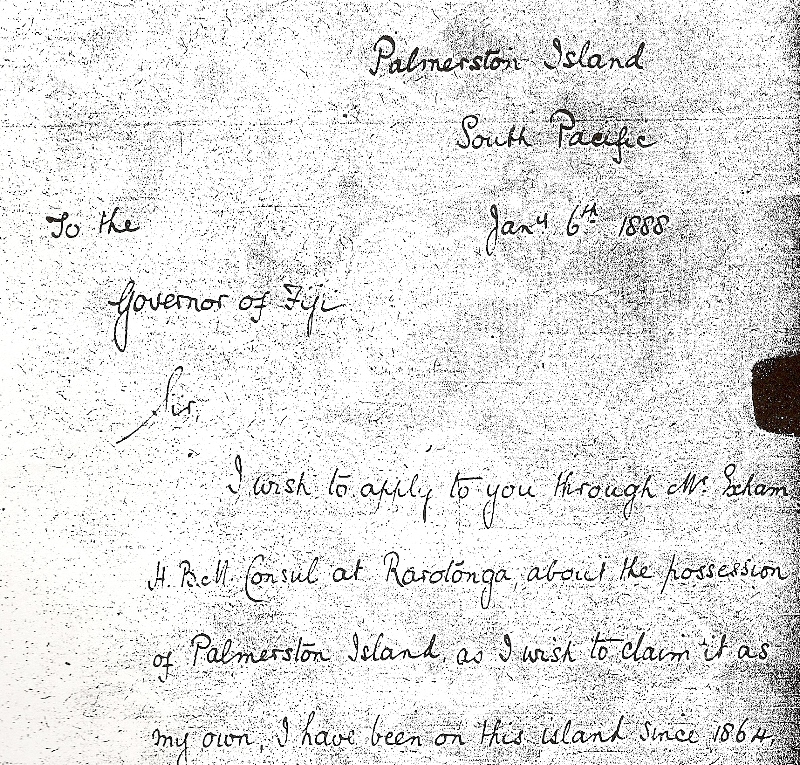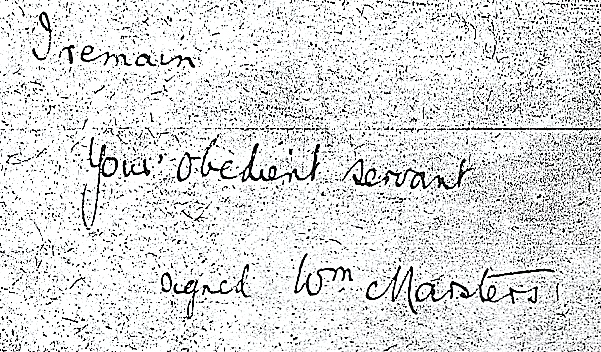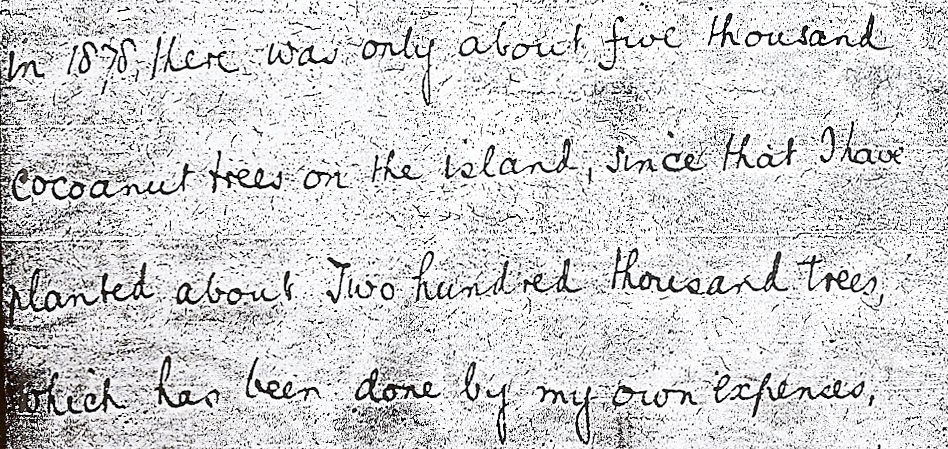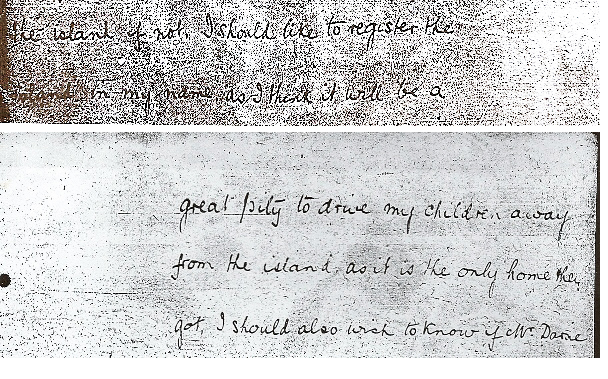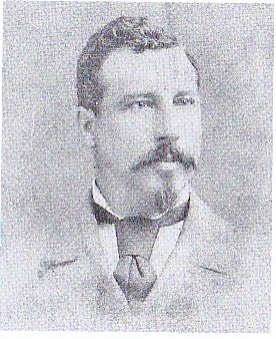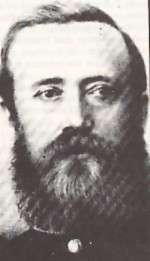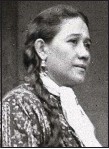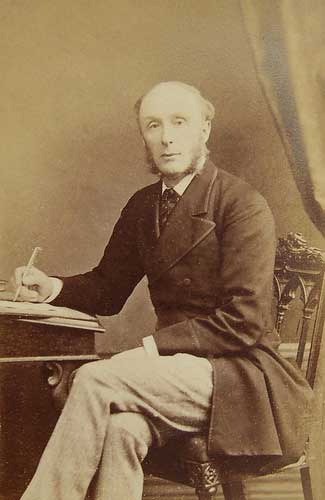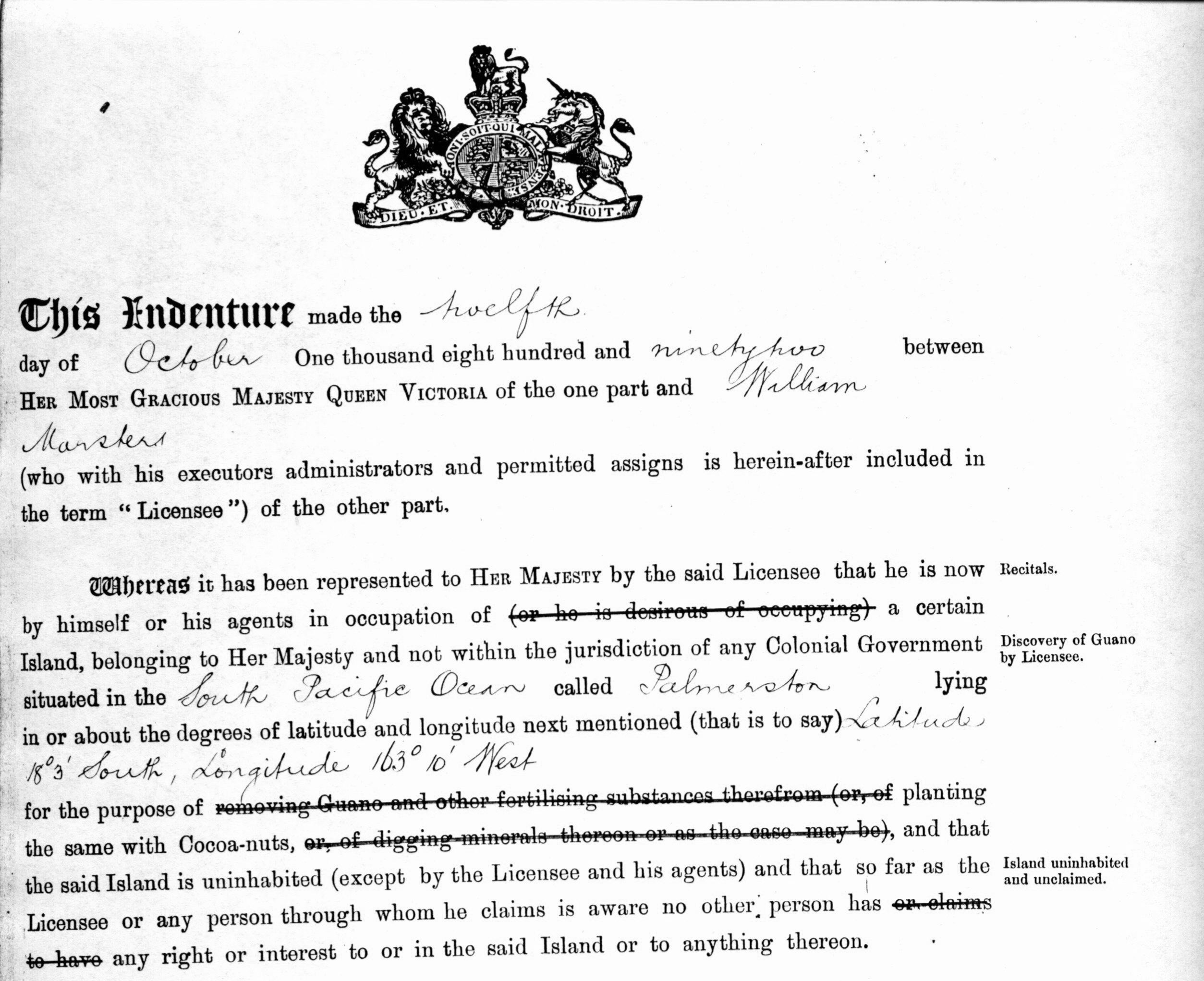MARSTERS OF PALMERSTON
A unique family saga
William Marsters' claim and the Scotsman who challenged it
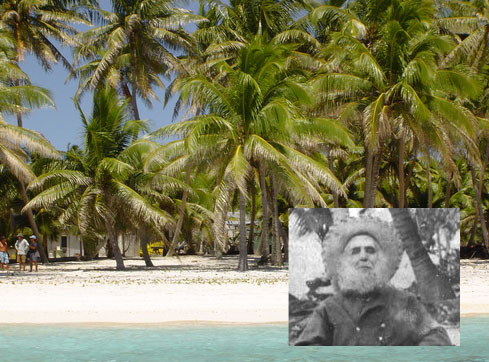
William Marsters first laid claim to Palmerston in 1888. In the 25 (or maybe 24*) years since his arrival on the remote island, he planted tens of thousands of coconut trees, and turned the tiny atoll into a home for himself, his "wives" and children. A letter in his own handwriting tells the story.
But his claim was very strongly contested by Scotsman, George Darsie who was determined to take the island for himself. He was the husband of Princess Titaua of Tahiti who, herself was the widow of John Brander who arranged for William to be taken to Palmerston in the first place.
Detailed research in the UK's national archives has turned up documents which recall vividly what went on during this battle for ownership. It's a long story, but a fascinating one
*The year of William's arrival on Palmerston is disputed
